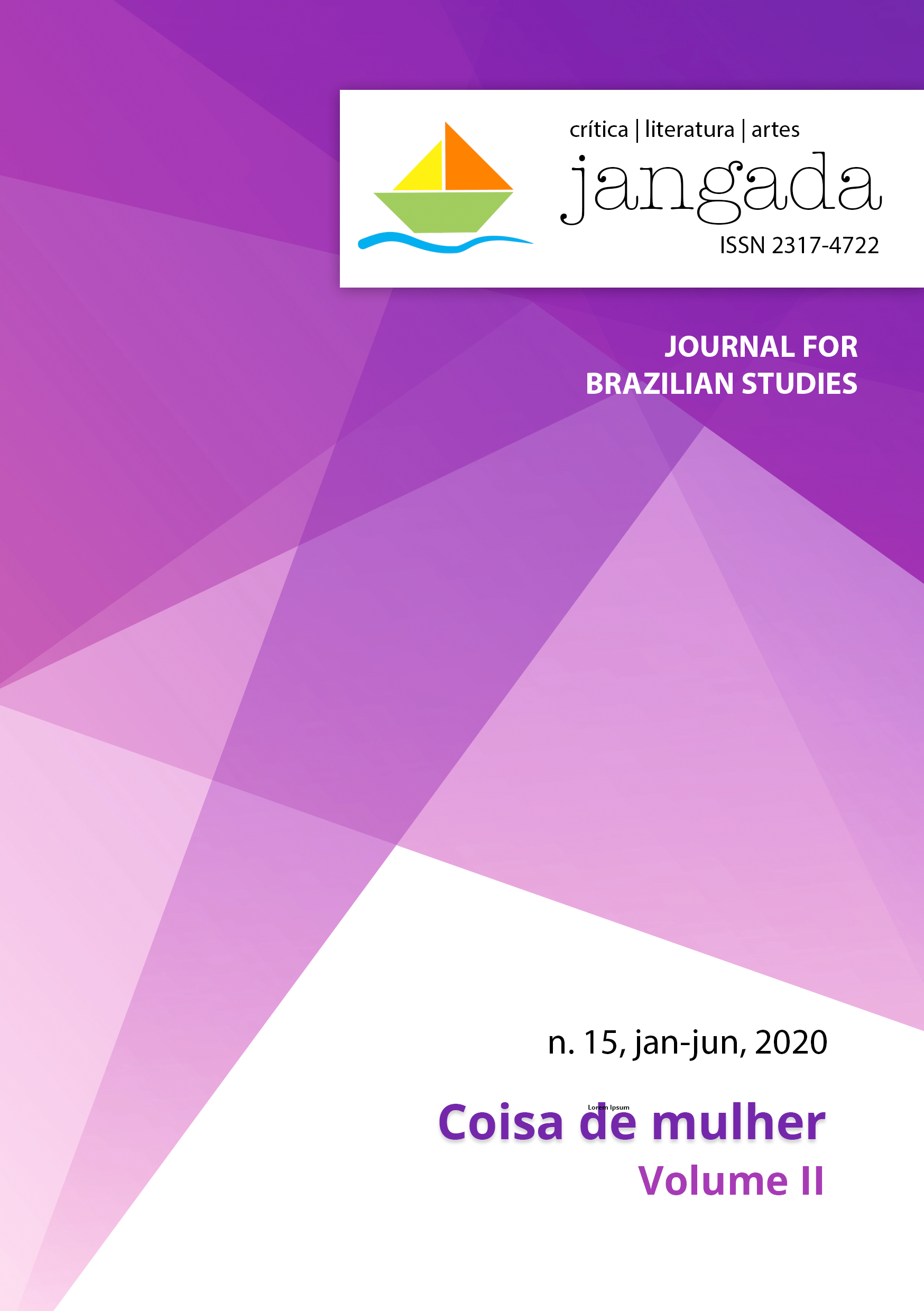A voz erótica feminina em "Ritmos de inquieta alegria", de Violeta Branca
DOI:
https://doi.org/10.35921/jangada.v2i15.237Keywords:
Violeta Branca, autoria feminina, erotismoAbstract
Violeta Branca's Ritmos de inquieta alegria (1935) has one of the main characteristics or eroticism cast in a densely audacious lyricism and, therefore, shows how it is the most important landmark work in Brazilian literature in the Amazon. This work can analyze the erotic and spiritual aspects of consciousness of the lyrical feminine self as well as sacred and profane elements. To this end, theoretical support was sought in basic works such as Georges Bataille's The Eroticism (1987), The Double Called Love and Eroticism (1994), by Octavio Paz, The Sacred and Profane (1992), by Mircea Eliade and The sensitivity of Punhais (2011), by Marcos Frederico Krüger, as well as articles on the subject. In addition, the reading of White Violet's poems and the analysis of the presence of eroticism and spirituality are collected from the deep awareness of the self-world by the female self, thus observing with regard to between eroticism and religiosity. of the work that transits, uses, between sacred and profane pulsations.
Downloads
References
BATAILLE, Georges. O erotismo. Tradução Calos Viana. Porto Alegre: LP&M, 1987.
BRANCA, Violeta. Ritmos de inquieta alegria. Manaus: Editora Valer, 1998.
COELHO, Nelly Novaes. O erotismo na literatura feminina do início do século XX - da submissão ao desafio ao cânone -, 2016. Disponível em < http://www.hottopos.com/vdletras3/nelly.htm > Acesso em 23 de abril de 2020.
ELIADE, Mircea. O sagrado e o profano. Trad. Rogério Fernandes. São Paulo: Martins Fontes, 1992.
FONSECA, Pedro Carlos Louzada. O que (inter)rompe o erotismo na literatura de autoria feminina. In: BORGES, Luciana. O erotismo como ruptura na ficção brasileira de autoria feminina: um estudo de Clarice Lispector, Hilda Hirst e Fernanda Young.
FOUCAULT, Michel. A história da sexualidade I: A vontade de saber. Trad: Maria Thereza da Costa Albuquerque e J. A. Guilhon Albuquerque. Rio de Janeiro: Edições Graal, 1988.
KRÜGER, Marcos Frederico. A sensibilidade dos punhais. Manaus: Editora Muiraquitã, 2011.
MORAES, Eliane Robert. A erótica literária no modernismo brasileiro. 2016. Disponível em: <http://www.abralic.org.br/eventos/cong2008/AnaisOnline/simposios/pdf/010/ELIANE_MORAES.pdf>. Acesso em 23 de abril de 2020.
MORAES, Péricles. Os intérpretes da Amazônia. Manaus: Editora Valer e Governo do Estado do Amazonas, 2011.
NOVOA, Carmen. Violeta Branca: poetismo de vanguarda. Manaus: Academia Amazonense de Letras, 2010.
PAZ, Octávio. A chama dupla: amor e erotismo. Trad: Wladir Dupont. Lisboa: Assírio&Alvim, 1994.
TELLES, Tenório. Evocações líricas e transição modernista em Violeta Branca. In: BRANCA, Violeta. Ritmos de inquieta alegria. Manaus: Editora Valer, 1998. p. 20.
VICENTE, Joselia. O erotismo em sua evolução histórico-cultural: a saga da temática mais repelida e cobiçada da literatura. Disponível em: <http://alb.com.br/arquivo-morto/edicoes_ anteriores/anais15/alfabetica/VicenteJoseliaAparecidaPires.htm>. Acesso em 23 de abril de 2020.








